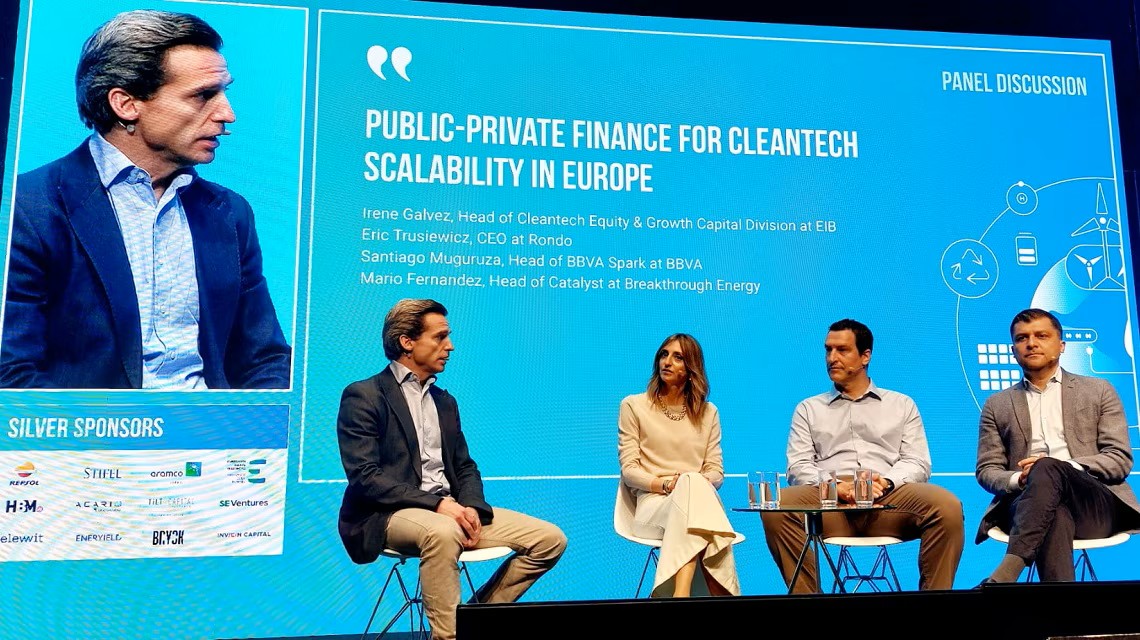Crowdfunding, crowdlending and equity crowdfunding: these are the new forms of participatory financing
Financing channels that are different to the traditional routes can be found within the market. These include participatory financing models, such as crowdfunding, equity crowdfunding and crowdlending. These three solutions are based on third-party contributions and can be useful for raising the first funds for a project, but there are differences between the three that are worth knowing.
The hunt for financing is one of the greatest challenges that entrepreneurs face. Multiple alternatives within the market can be found. Some are more traditional in nature, such as business angels (private investors who have knowledge of the business world) or venture debt (a loan that combines debt and equity and prevents entrepreneurs’ shareholdings from decreasing significantly). But others are moving away from the banking sector and taking advantage of technology to raise funds. This is the case with crowdfunding, equity crowdfunding and crowdlending, three formulas of collective or participative financing that have emerged in recent years and that can be of great help to entrepreneurs trying to get started in the business world.
What is crowdfunding?
Crowdfunding, also known as ‘micromecenazgo’ in Spanish, is a type of collective and collaborative financing in which a group of people contribute small amounts of capital to bring a project to fruition. These contributions can be made altruistically, without expectation of reward, or in exchange for non-monetary compensation, such as a sample of the product being proposed for sale. The granting of these rewards, however, will depend on the success of the project, as they will only be granted if the project is fully funded.
Crowdfunding is usually used in the early stages of a startup’s life, that is, in the pre-seed and seed stages . The origins of this financial method are often traced back to 1997, when the British rock band Marillion used their e-mail list to ask their fans for money to finance their US tour. The success of this initiative, which raised $60,000, led music producer Brian Camelio to found ArtistShare, the first crowdfunding platform in history, in 2001. However, the term as such did not come into common use until 2006 when entrepreneur Michael Sullivan coined it for the first time on his personal blog.
Since then, multiple crowdfunding platforms have emerged where entrepreneurs can present their projects in order to raise funds, such as Kickstarter, Verkami or Ulule. On a global scale, the global crowdfunding market is expected to exceed US$15 billion (around 13.7 billion euros) by 2023 and, by 2027, to reach 27 billion (around 24 billion euros). Companies such as Oculus VR, Peloton and PopSockets are some of those that have benefited from this funding model.

What is crowdlending?
Crowdlending is another method of participative financing with which entrepreneurs can raise funds for their projects thanks to contributions from third parties. This alternative works in a similar way to a bank loan, as entrepreneurs are obliged to pay back any money borrowed, as well as a series of interest payments, within a previously agreed period of time, regardless of the success of the project.
Projects financed through crowdlending are managed through specialised platforms, which are responsible for analysing the reliability of the companies and projects they host in order to reduce the risk of default. This financial model has its origins in 2005, when Zopa, the first platform offering this alternative, was launched.
Since then, other platforms have emerged that offer this solution, such as ECrowd!, StockCrowd or Mintos. In addition, on a global scale, the global crowdlending market reached US$5 billion (4.5 billion euros) in 2022, and between 2023 and 2030 it is expected to experience a CAGR (compound annual growth rate) of more than 20%.
Equity crowdfunding, another participatory alternative
In addition to crowdfunding and crowdlending, another participatory financing model that may also be of interest to entrepreneurs is equity crowdfunding. This financing method is also based on contributions from third parties but has the special feature that each of the people who back the project become investors.
Specifically, this method of financing offers investors a stake in the company they choose to finance, which makes them direct owners of the company. These investors do not obtain a direct reward but obtain the benefits depending on the profitability achieved by the company, so the return on investment is not guaranteed. Dozen Investments, Fundeen or Capitall Cell are some of the platforms that offer this financing model, which has already benefited companies like Heura Foods, Vicio and 51trips.

Differences between crowdfunding, crowdlending and equity crowdfunding
Although the essence of crowdfunding, crowdlending and equity crowdfunding is participatory financing, among these formulas there are important differences that entrepreneurs should be aware of:
- Rewards. In crowdfunding projects, investors invest altruistically or in exchange for a non-monetary reward, while in crowdlending, the entrepreneur is expected to pay back the borrowed money, as well as interest. In the case of equity crowdfunding, investors obtain shares in the company, becoming owners of the capital.
- Return on investment. In crowdlending, a return on investment is sought regardless of the success of the project. In crowdfunding, on the other hand, investors will only obtain rewards if the project is financed, while in equity crowdfunding, the benefits will be linked to the performance of the company.
- Guarantees. Although crowdfunding platforms provide information on the status of the project, the guarantees for these projects are lower than those financed by crowdlending or equity crowdfunding, where the platforms carefully analyse the viability of the initiatives.
Crowdfunding, crowdlending and equity crowdfunding are two attractive financing methods that can help entrepreneurs find the funds they need to start their entrepreneurial adventure. In order to evaluate the best financing option for their startup, however, it is advisable for entrepreneurs to assess all the options available in the market.
Within this framework, BBVA Spark offers alternatives such as venture debt or growth loans (loans offered in the advanced stages of a startup to boost its expansion) with which they can obtain the resources they need for their business. Knowing the differences between the different financing methods will be key to choosing the most convenient option for each business project.



